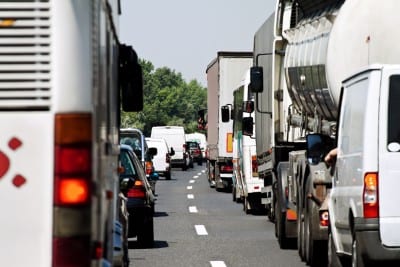An often-overlooked expense for service fleets is time spent on the road and not at the actual service site. Gas is wasted, vehicles are worn down and a technician’s valuable time is squandered while their hands are used turning on blinkers instead of machines. Time equals money, and perhaps the biggest time culprit is traffic.
 Texas A&M’s Texas Transportation Institute recently published the 2011 Urban Mobility Report (UMR), which looks at the effects of traffic congestion on business and commuters in 2010. The most compelling findings: the total cost of traffic congestion was over $100 billion in 2010, nearly $750 per driver, and 1.9 billion gallons of fuel were wasted. The most depressing finding: traffic will only get worse, adding an additional three hours of delay by 2015 and seven hours by 2020. Because service fleets generally log more miles per year and use vehicles with lower fuel economies than the average commuter, these dismal numbers are likely lower than fleets’ actual figures.
Texas A&M’s Texas Transportation Institute recently published the 2011 Urban Mobility Report (UMR), which looks at the effects of traffic congestion on business and commuters in 2010. The most compelling findings: the total cost of traffic congestion was over $100 billion in 2010, nearly $750 per driver, and 1.9 billion gallons of fuel were wasted. The most depressing finding: traffic will only get worse, adding an additional three hours of delay by 2015 and seven hours by 2020. Because service fleets generally log more miles per year and use vehicles with lower fuel economies than the average commuter, these dismal numbers are likely lower than fleets’ actual figures.
With such a gloomy outlook, how can service fleets combat traffic congestion that shows no signs of letting up? The UMR suggests driving outside of weekday rush hours and advocates more flexible work hours, both of which are often out of the question in the sleepless service industry. Luckily, however, there are a number of ways fleets can mitigate traffic congestions.
GPS
As we’ve written before, new rugged devices, smartphones and tablets all come loaded with GPS software that enables techs to get to their destination in a number of ways including taking the fastest route, sidestepping highways and avoiding traffic. Most of these devices are equipped with real-time traffic tracking capabilities that lets you see the congestion ahead before you are stuck in it.
Telecommuting
Of course most services still need to be handled on-site, however telecommuting, which was once unheard of in the service industry unless you were an office staffer, is becoming an increasingly viable alternative to some on-site work. In a post on simplifying your business we wrote last month, we noted how real-time communication tools like Yammer, Chatter and FaceTime can effectively connect the tech and customer wirelessly, allowing technicians to virtually diagnose issues and explain simple fixes to be carried out by the customer.
Hybrid and electric vehicles
These types of vehicles are well established in the general consumer market but due to a number of factors, have had a slow adaptation rate within service fleets. Acquisition costs can be massive, however the economical benefits of hybrid and electric fleets are undeniable. These fuel-efficient alternatives provide a safeguard against a number of threats to fleets including high gas prices, increasing insurance premiums and gas wasted sitting in traffic.

Share this: